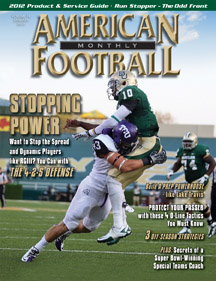Article CategoriesAFM Magazine
|
AFM Subs Ask - with former NFL special teams coach Mike Sweatman© More from this issueMike Sweatman coached for 23 years in the NFL, primarily with special teams. He began his NFL career with the Vikings and later coached with the Bears, Patriots and Jets and had two stints with the New York Giants. Sweatman coached under Bill Parcells when the Giants won the Super Bowl in 1990 and later, Coach Tom Coughlin hired him as Special Teams Coordinator in 2004. His career included three Super Bowl appearances and two championships. He answers your questions about special teams play. What should a head coach, at any level, require of his special teams coach? That is, what are his major goals and responsibilities?
|
|
|||||||
| HOME |
MAGAZINE |
SUBSCRIBE | ONLINE COLUMNISTS | COACHING VIDEOS |
Copyright 2025, AmericanFootballMonthly.com
All Rights Reserved





